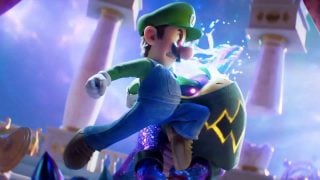Astral Chain is quickly becoming one of the most hotly anticipated titles of the year for Switch, looking to provide the high-octane blood-pumping action that Platinum Games is known for. Recently, Polygon sat down with director Takahisa Taura to discuss development on the game and much more. Here’s a rundown:
- The game’s structure is somewhere between the linearity of Bayonetta and the open-ended design of NieR: Automata — players will use the police station as a hub from which they can go to new levels and replay old ones.
- Astral Chain started with the idea of a fantasy setting, but during developmental talks with Nintendo, they found that a lot of other games were employing fantasy settings, so it gradually evolved to a cyberpunk aesthetic. Big influences on the design include Ghost in the Shell, Appleseed, and especially Zetman, whose artist Masakazu Katsura does character design for the game.
- Like many other Platinum projects, Astral Chain’s development is very piecemeal, starting from a core concept and adding on ideas throughout, like picking up trash or going to the bathroom.
- On that note, the bathrooms, litter collection, and other mundanities are meant to represent day to day duties of a cop – the daily grind in between cataclysmic destruction. It helps with immersion as well as breaking up the gameplay a bit.
- In one of the interview’s more interesting points, the Polygon interviewer brings up how police in the US are currently a politically complicated issue, and how officers might be perceived differently in Japanese culture. Taura states that Japanese people tend to not have as extreme a position on the police, and that they were chosen as the protagonists in order to give them the image of being a hero — you can’t harm civilians, and you can’t do the wrong thing. He also hopes that those who may view the police poorly change their minds after playing the game.
- They then delve into the relationship between the game’s protagonists, the villainous Chimera, and the Legions you’ll control. Legions are Chimera that are captured and put into mental synchronization. As the game progresses, the Legions and the players gradually move from two beings working in tandem to fighting as one.
- The core concept for the game was controlling two characters at once. The chain connecting them was added as a way for the player to keep track of their Legion at all times, and from that point the devs kept adding ideas on how to use the chain in combat. An apparently big inspiration was an old arcade game called Libble Rabble.
- The interviewer brings up NieR: Automata at a couple points (Taura was lead game designer for the title), asking if the game would feature similarly deep philosophical undercurrents. Taura states that while NieR director Yoko Taro creates a story before worrying about the rest of the game, Astral Chain was built from a core of gameplay ideas, and thus is less thematically driven.
- To Taura, success with Astral Chain will occur “if it sells well and puts us in the black.” His joking aside, he claims that as long as one person comes up to him and tells him they enjoyed the game, he would be happy.
Astral Chain is due out August 30th. We’ll stay whip-sharp for any news until then, so stay wired for more info in the future.
Leave a Comment


